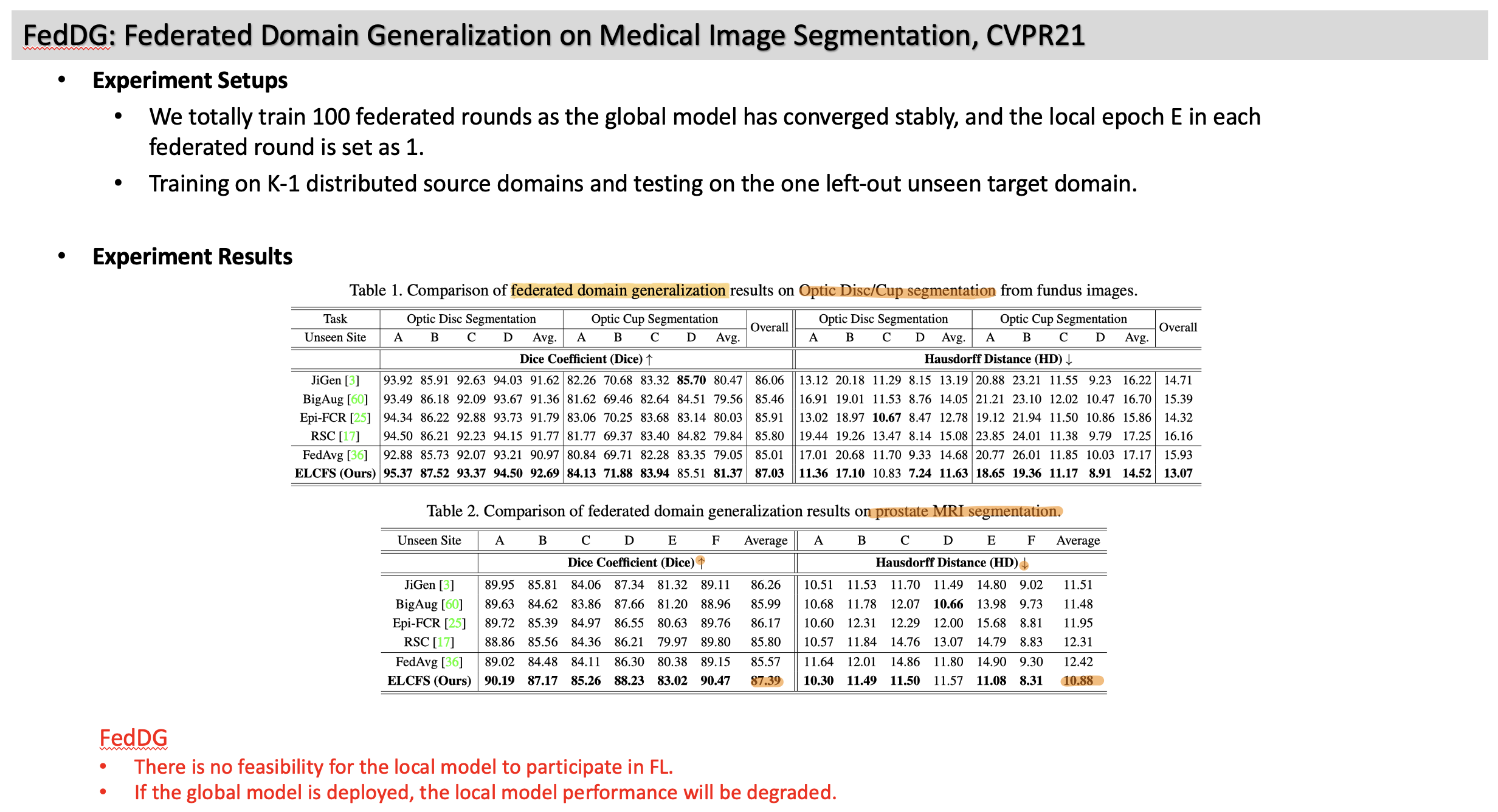[FL] Federated learning papers 2 (+Domain Adaptation)
FL_papers_2
1. Federated Multi-Target Domain Adaptation, WACV22
- Overview: [Local, locals SelfSL] (T) Unlabeled client datasets & Public data only available in the server (M) Pseudo label & Maximum classifier discrepancy.
- Introduction
- New task: FMTDA (Multi-target = data heterogeneity): All client data is unlabeled, and a centralized labeled dataset is only available on the server
- Challenges of FL + DA
- Unlabeled dataset in clients
- Domain shift between clients
- Communication overhead
- Method
- Adversarial learning using MCD, (2) and (5) in fig. ->
- Upload only parameters of a classifier.
- Reference & Details: https://junha1125.github.io/blog/artificial-intelligence/2021-10-25-DGpapers6/#67-federated-multi-target-domain-adaptation

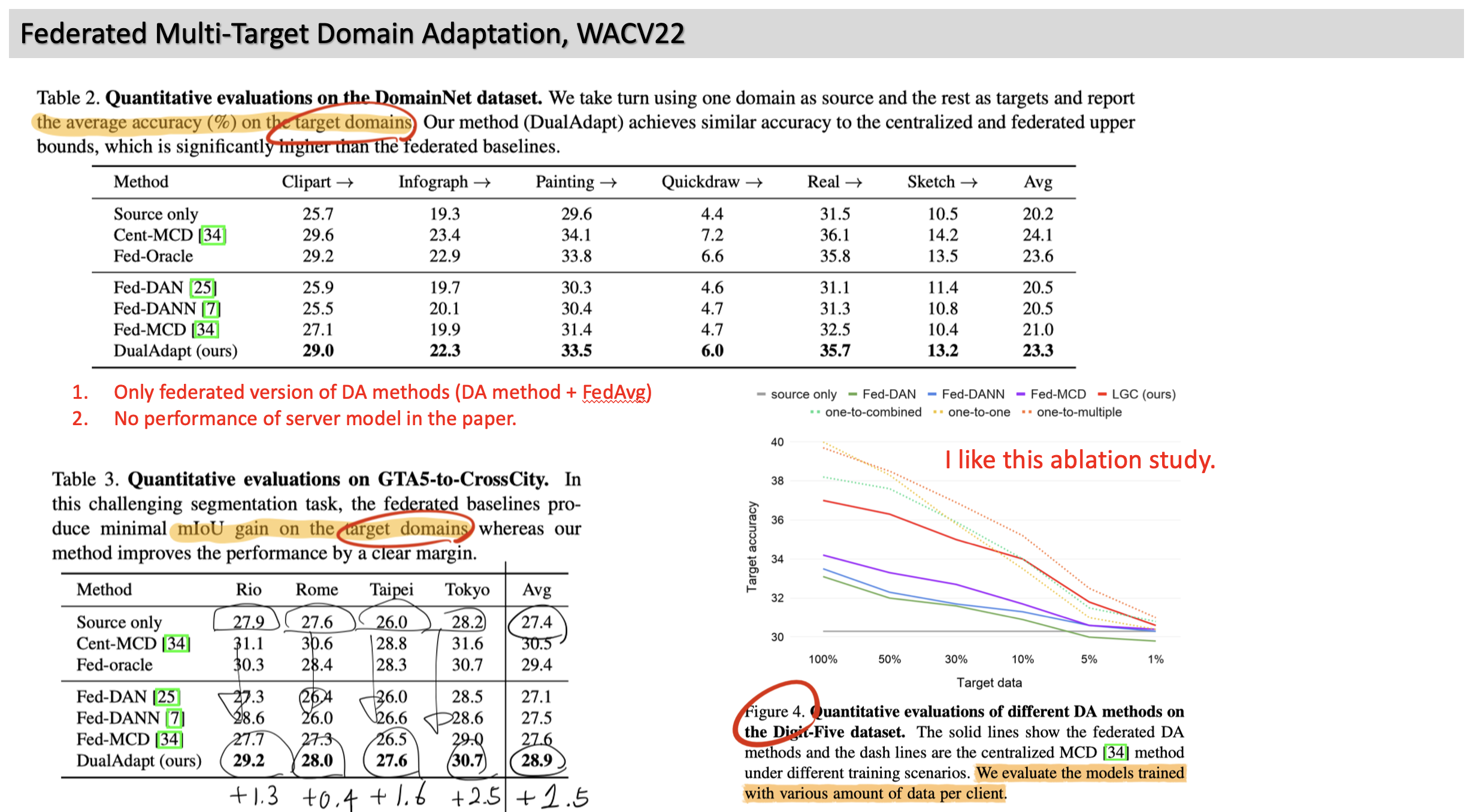
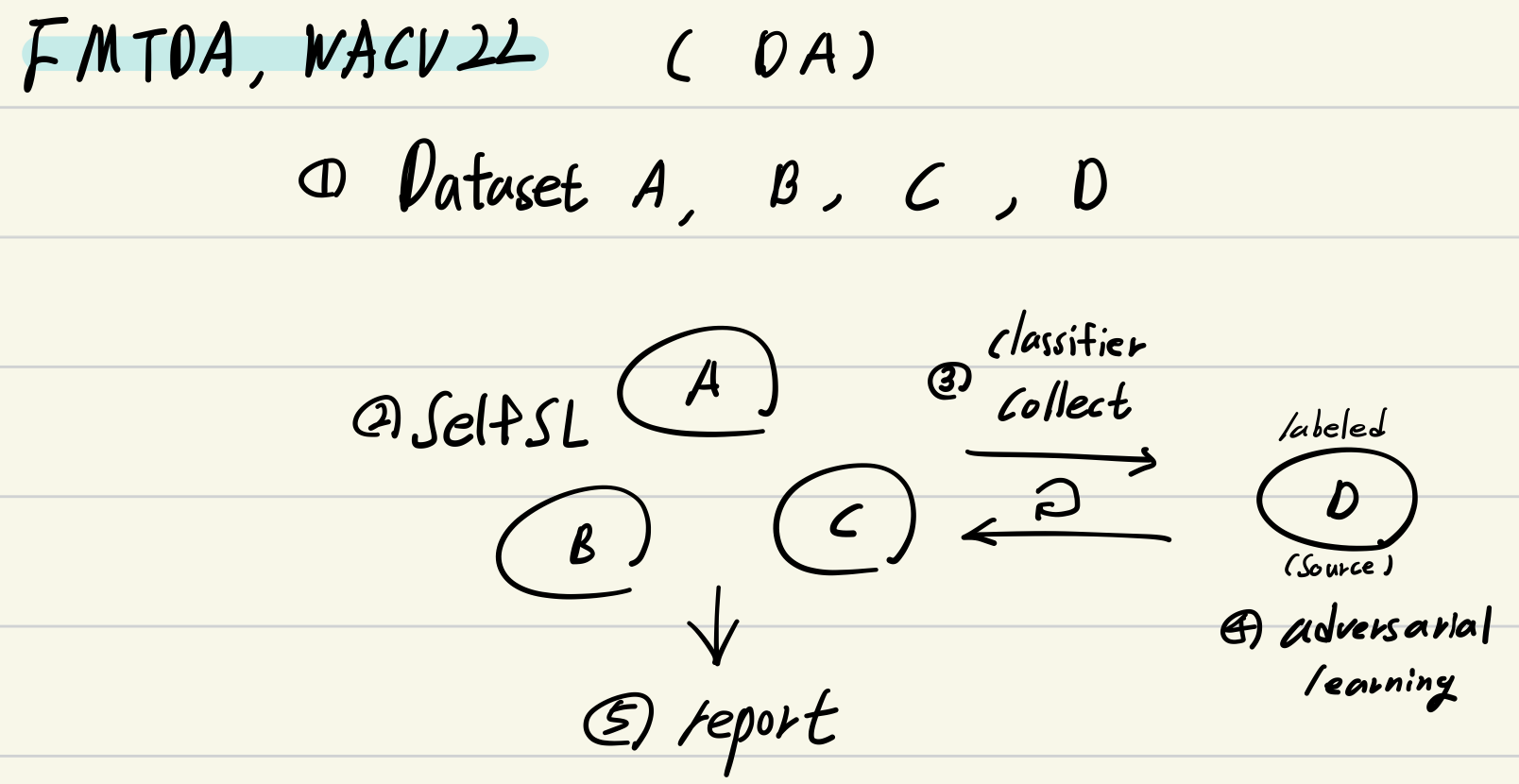
2. Client-agnostic Learning and Zero-shot Adaptation for Federated Domain Generalization, ICLR23 submitted
- Overview: [Global, locals SL] (T) Training local models with DG algorithms using (M) mix-style global and local statistics & alpha-BN during testing.
- Link (https://openreview.net/forum?id=S4PGxCIbznF)
- Introduction
- Federated domain generalization aims to generalize the model to new clients.
- (1) FedAvg → (2) FL with non-iid data (=heterogeneous label distribution) → (3) domain shift btw locals
- Previous (3) works train local clients without DG algorithms.
- Method
- Client-agnostic learning with mixed statistics.
- Randomly interpolating instance and global statistics in BN. (only update BN)
- Zero-shot adapter
- alphaBN using an alpha generator named zero-shot adapter.



3. Collaborative Optimization and Aggregation for Decentralized Domain Generalization and Adaptation ICCV21
- Overview: [Global, locals SL+ global SelfSL] (T) decentralized DG and UDA (M) collaborated learning with local's classifiers, agreement-based weighted aggregation
- Introduction
- Centralized DG and UDA (Issue 1) data privacy. (Issue 2) shared one model, not ’local models and a global model.’
- Diff from FedAvg: (1) Selective central aggregation (2) Multiple source datasets with domain shift.
- Proposed Task: we study the problems of decentralized DG and UDA, which aim at optimizing a generalized target model via decentralized learning with non-shared data from multiple source domains.
- Method
- Local Model Collaborative Optimization
- CE loss + 2. hybrid IN&BN (Resolve domain shift) + 3. Collaboration of frozen Classifiers (Generalization of a backbone)
- Global Model Optimization and Aggregation
- Parameter aggregation based on multi-agreement (Construct global model + further protect attack) + 2. Same loss as above)
- Concerns
- Lack of validity for source domains (clients) to participate in federated learning.
- Labeled clients (source) / Unlabeled server (target) -> Awkward
- How to handle Infinite clients?
- Updating the local model with the global model can negatively impact performance in local domains.
- Experiment results ->> Domain Generalization (The model initialized on ImageNet pre-trained model) := Fine-tunning task


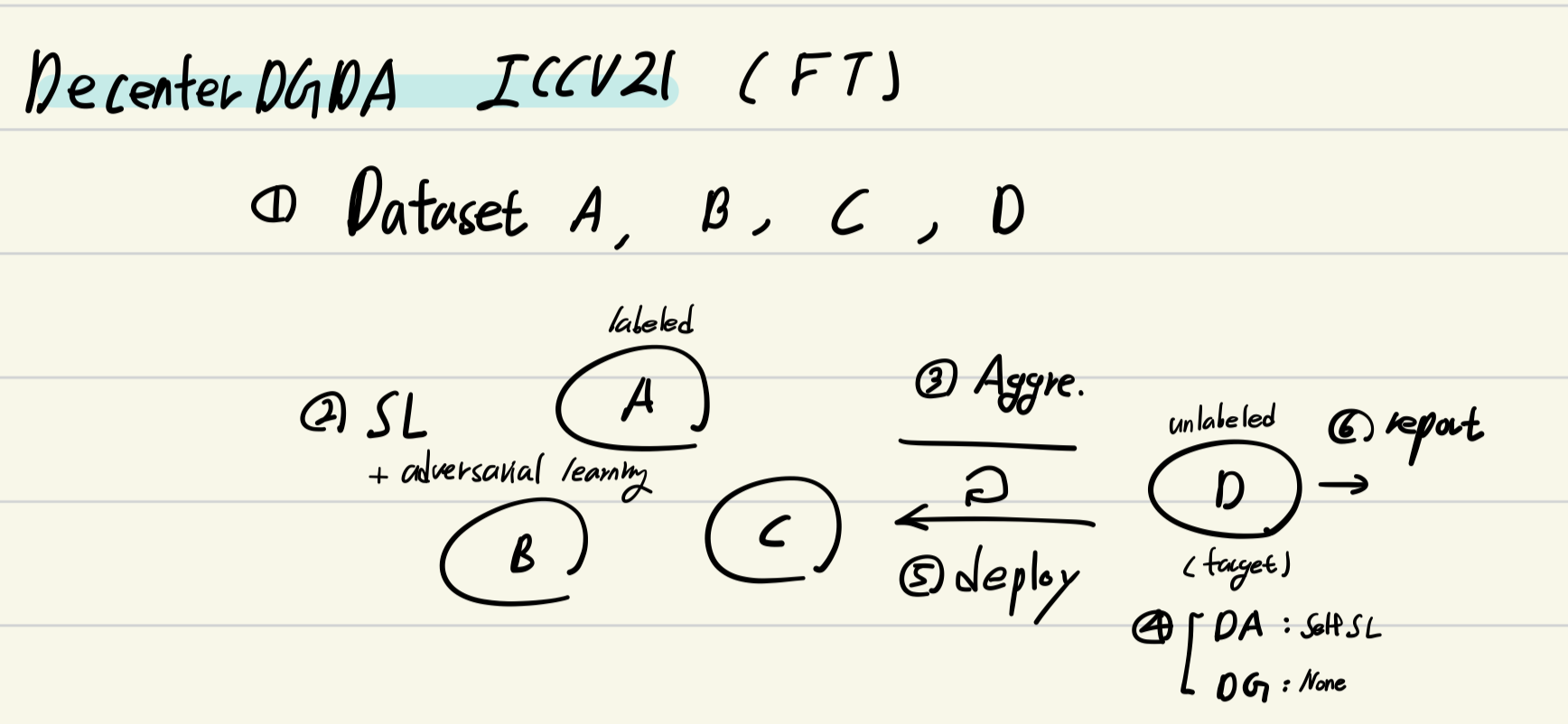
4. Collaborative semantic aggregation and calibration for separated domain generalization, TIP21
- Overview: [Global, locals SL] (T) federated DG (M) layer-by-layer weighted aggregation and, layer-wise weighted distillation
- Introduction
- Tremendous data is stored locally in distributed places nowadays, which may contain private information, e.g., patient data from hospitals and video recordings from surveillance cameras.
- Method
- [Build fused model] Weighted aggregation layer-by-layer
- [Train fused model] Layer-wise feature alignment (weighted distillation)


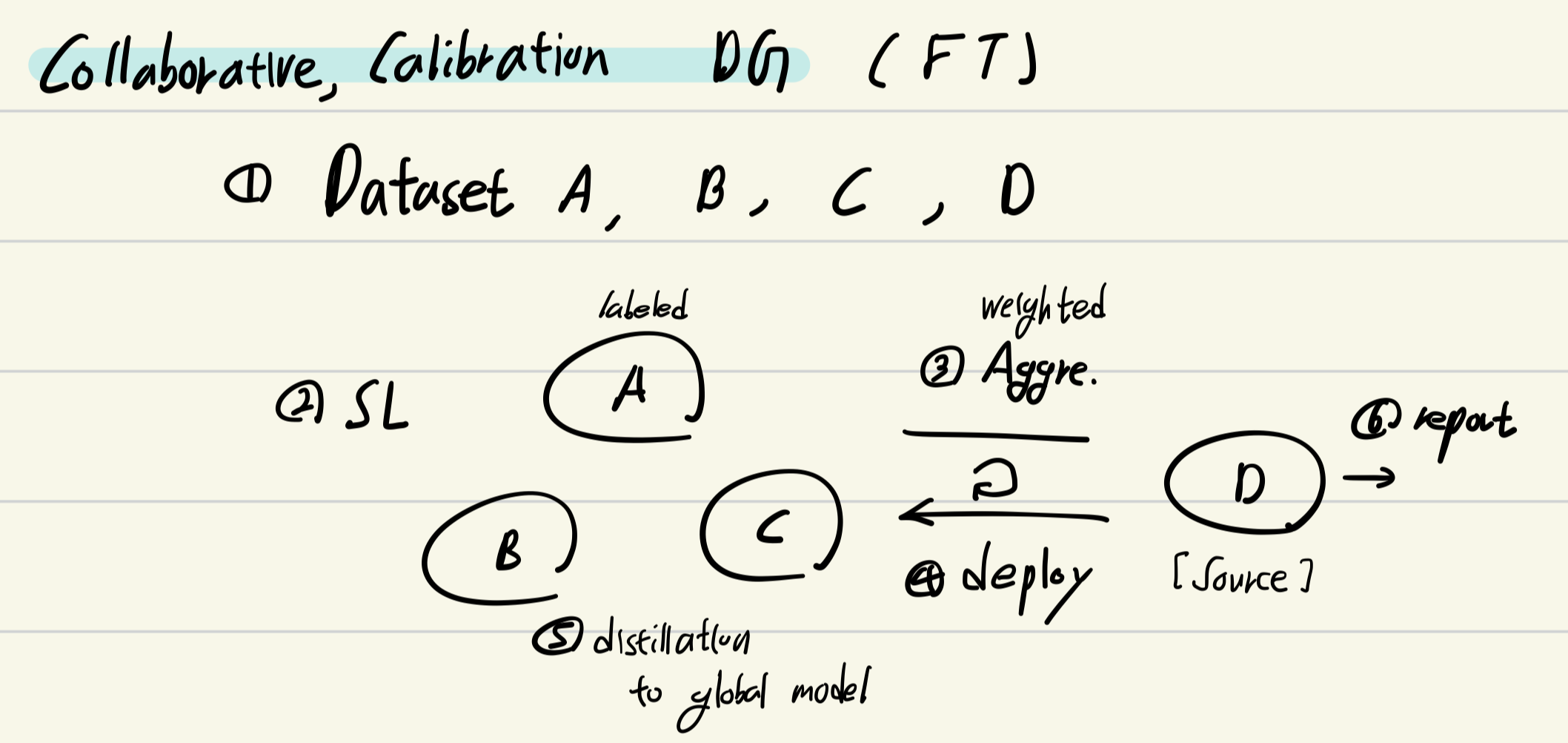
5. FedDG: Federated Domain Generalization on Medical Image Segmentation, CVPR21
- Overview: [Global, locals SL] (T) federated DG (M) style-interpolation using amplitude from Fourier transformation and pixel-wise contrastive learning for segmentation
- Introduction
- All existing FL works only focus on improving model performance on the internal clients while neglecting model generalizability onto unseen domains outside the federation.
- The learning at each client can only access its local data. Therefore, current DG methods are typically not applicable in the FedDG scenario.
- Method
- Training local clients with DG algorithms
- Image Fourier transformation → amplitude (style) and phase spectrum (semantic info) → Interpolation amplitude spectrum to generate unseen style image.
- (meta-learning-based) boundary-oriented contrastive learning

